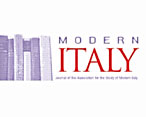| RIVISTA DI STUDI ITALIANI | |
| Anno XX , n° 2, Dicembre 2002 ( Contributi ) | pag. 170-201 |
| CROCE AND HEGEL. IN THE WAY OF A DIALOGUE | |
| ROBERT BURCH | |
| University of Alberta, Edmonton, Alberta |
|
|
Whether it is merely an ironic happenstance, or something more subtle -- the List der Vernunft perhaps -- the fact that Croce published his most celebrated essay on Hegel in 1907, that this essay was entitled, "Ciò che è vivo e ciò che è morto della filosofia di Hegel", and that its author bore the imposing name, "Benedetto Croce", are matters deserving of at least a passing thought. I. What is in a name? The name Croce recalls a basic Hegelian theme. In the preface to the Philosophy of Right, Hegel writes: "To recognize reason as the rose in the cross of the present and thereby to enjoy the present, this rational insight is the reconciliation with actuality that philosophy grants" (Grundlinien, 26- 27). Croce would doubtless savor the fact that Hegel uses a metaphor here to make a philosophical point, and not just any metaphor, but one surfeit with meaning. But in this, as in all matters, Hegel has his reasons. "Philosophy has the right", he claims, "to select from the language of common life, which is made for the world of representation, such expressions as seem to approximate the determinations of the concept (W. d. Logik, II, 357; Hegel's italics). Ostensibly, the particular expressions "cross" and "rose" are selected here from the common language of a particular religious tradition to suggest something in general about the relation of reason and reality, and reason's reconciliatory function. Reason lives incarnate in the real world of brute fact, chance, fragmentation, evil and death (i.e., the cross), and yet by recognizing itself in this very reality, reason (i.e., the rose) conquers it. |
|
| Registrati e acquista crediti per leggere l'articolo | |
| Oppure acquistalo subito con PayPal | |
LINKS


